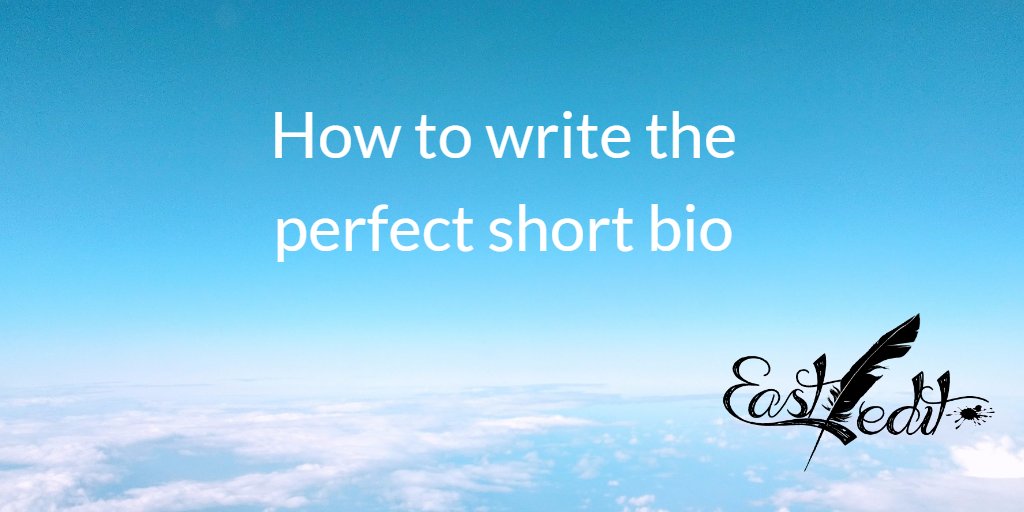So, you’re doing the LinkedIn thing? Trying to promote yourself and stand out from your peers; speak at conferences; write things that people will read and think, ‘yeah, this person knows stuff’?
This means you’re going to need to write at least 1 short bio.
That is, something 100 words or less that describes who you are, why you know what you’re talking about, and what you have to offer. It’s the kind of spiel stuck onto conference flyers, on LinkedIn summaries, or at the end of blog posts.
If you get it right, people will like you—and by extension, are more likely to agree with your opinions—subscribe or follow you, or just turn up to your conference session.
if you get it wrong, people won’t do any of those things, and will be more mentally aligned to disagree with your points, and actively look for ways to find fault with your position. (This is driven by a variety of cognitive biases, such as the halo effect, social proof and priming.)
So, no pressure.
If you’re like me, writing about yourself in the 3rd person (i.e. when you refer to yourself by your name—as in, ‘Rory writes things.’) can feel painfully awkward.
However, help is at hand. Below is my formula for writing an engaging short bio.
The formula
- The first line introduces your name and your current occupation and any general worky claim to fame—this should support your authority to be speaking or writing about the topic in question.
- The second line references the topic that the bio will appear under and talks about some of your other interests. I like to make this a little self-deprecating, which helps to make you more relatable and likeable.
- The third line returns to more specific aspects of your work. Again, I like to contrast this with something light.
- The fourth line is your call to action for people to find out more about you, follow your social networks or visit your website.
Further to this, the cadence is important. That is, the rhythm of the writing.
(Don’t worry, I’m not asking you to write your bio in iambic pentameter!)
What you do need to consider is how the bio sounds when spoken. We all tend to have an internal voice that speaks the words in our heads as we read them.
An example and an explanation
Here’s one I prepared earlier.
Rory is a writer, editor, trainer and the founder of East Edit. When not being overly concerned about other people’s word choices, he grows chillies and wages chemical and psychological war on marauding aphids. He occasionally reads and writes things while fighting the entropic forces of 2 small children. Check out eastedit.com.au for more articles like this and details of upcoming writing courses.
The first sentence employs several rhetorical devices:
- The main one is saving the ‘heaviest’ item in the list for last. The phrase ‘the founder of East Edit’ has the most syllables of the 4 items in the list. Our brains just seem to naturally like word orders like this, and it appears in many famous speeches. Consider ‘life, liberty, and the pursuit of happiness’.
- Congeries—fundamentally, just a list. People like lists.
- A form of assonance with the last syllables of ‘writer, editor and trainer’.
You don’t need to have exactly 4 items in your occupational list, but 1 is too short, and more than 4 starts to get awkward. Try to aim for a similar number of syllables in the sentence; this could be done by including the name of your organisation, or the number of years you’ve been working in your industry.
The second sentence bounces off the topic the bio sits under. (The example above was after a certain LinkedIn post about an aspect of grammar…) This is mentioned in an introductory phrase (‘When not…’), followed by a comma introducing some personal information that makes you more relatable as a human. In my case, it’s meant to convey that I’m not some kind of emotionless grammar robot—I might even be a bit like you or someone you know and like.
Stick to 2 items in the second part of this sentence; use active voice with some strong verbs to keep the action of the protagonist clear. (In this case: …he grows chillies and wages chemical and psychological war…) I like to customise this sentence depending on where this particular version of my bio will sit.
The third sentence should circle back to your primary topic. Because you’ve just stated your name, introduce this with a personal pronoun (‘he’ or ‘she’). You could also include something personal (like in my example), or get straight to something you’re passionate about.
The last sentence is your call to action. Start it with a verb (‘Check out…’, ‘follow’, ‘read more’), and put your primary action first. You can sneak a couple of links in here to various aspects of what you’re trying to promote, but don’t bamboozle people with too many choices or conflicting actions.
And let’s not forget…
Lastly, 2 key points:
- Write in active voice. After all, it’s about you—what are you doing? You are the doer, the protagonist, in this super short story.
- Say it aloud. Does it sound natural? Could you imagine an MC saying it before you walked onto a stage?
Of course, this is not the only way to write a bio. Your experiences may vary. Let us know if this was helpful, what has worked for you, or share your own bio formula in the comments.
(And, if you know someone who might benefit from this post, please share it with them!)







